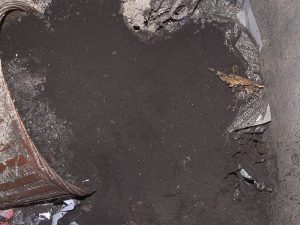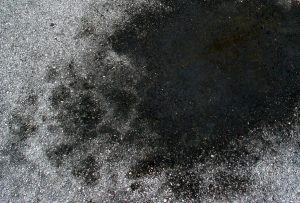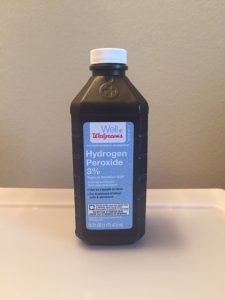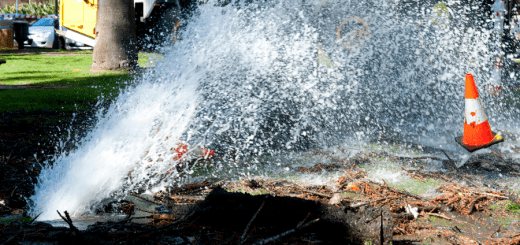How to Remove Soot from Carpet
Your fireplace creates a warm, cozy space where you can relax near the warmth of the lively, dancing flames. When the fireplace ignites, however, black sootSoot is fine black particles composed of carbon and other ma... More can leave the surrounding carpeting saturated with grimy sootSoot is fine black particles composed of carbon and other ma... More. Even luminous candles that offer a gentle glow can be a source of sootSoot is fine black particles composed of carbon and other ma... More.
When the sootSoot is fine black particles composed of carbon and other ma... More gets trapped within light colored or white carpeting, the dark stains are anything but appealing. Attempting to haphazardly scrub away the sootSoot is fine black particles composed of carbon and other ma... More only manages to spread the stains deeper into the carpet fibers. Where there is fire, sootSoot is fine black particles composed of carbon and other ma... More is unavoidable.
What is Soot?

What exactly is sootSoot is fine black particles composed of carbon and other ma... More? SootSoot is fine black particles composed of carbon and other ma... More is primarily composed of carbon that appears as organic material, like wood or coal, is burned. Dark, flaky particles find their way through the smoke onto areas in close proximity, like carpeting, or up the chimney, as in a fireplace fire.
SootSoot is fine black particles composed of carbon and other ma... More can be extremely tedious and difficult to remove, but it can be done. If you frequently burn fires in your fireplace, it may be handy to know how to skillfully remove sootSoot is fine black particles composed of carbon and other ma... More that accumulates on the carpeting near the fireplace. You may, in fact, be saddled with the task of lifting sootSoot is fine black particles composed of carbon and other ma... More almost as often as you run the fireplace.
How to Remove Soot from the Carpet
Use a few simple techniques to help remove tough sootSoot is fine black particles composed of carbon and other ma... More stains from your carpeting effectively and without spreading it other areas. You’ll need a few common household materials to accomplish the task:

- Baking soda or cornstarch
- Dry cleaning solutionA solution is a homogeneous mixture of two or more substance... More, hydrogen peroxide or rubbing alcohol
- Clean white towels
- Warm water
- Spoon
- Vacuum
Before you begin removing the actual soot stains, remove any large chunks of sootSoot is fine black particles composed of carbon and other ma... More resting on top of the carpeting. Use a utensil, like a spoon, to gently lift off any visible lumps. Be cautious and avoid smashing the sootSoot is fine black particles composed of carbon and other ma... More deeper into the carpet fibers, because you’ll only end up with further stains to clean up. If you’re hesitant in carefully undertaking this important step, simply skip it.
1. Remove Soot from Carpet with Baking Soda

The next phase in tackling the sooty nuisance is to sprinkle baking soda or cornstarch on the sootSoot is fine black particles composed of carbon and other ma... More. Baking soda and sootSoot is fine black particles composed of carbon and other ma... More are absorbents; you can also use other household absorbents instead of either of these options. Examples of additional effective absorbents include cornmeal and white talcum powder. Absorbents gently soak up the stains without damaging the material upon which they are sprinkled.
As the absorbent pulls in the stains, it forms into a cakelike substance that can be easily vacuumed. Some absorbents are powerful enough to remove light stains completely if left on the stain for eight hours. Experts recommend, however, that an hour is enough to absorb the sootSoot is fine black particles composed of carbon and other ma... More.
2. Removing the Soot with the Vacuum
Vacuum up the sootSoot is fine black particles composed of carbon and other ma... More and mess with a powerful vacuum once the absorbent has set. Use a vacuum hose in areas along the baseboards for a better reach.
3. Apply Hydrogen Peroxide
 Next, use a clean, white cloth soaked in dry cleaning solutionA solution is a homogeneous mixture of two or more substance... More, hydrogen peroxide or rubbing alcohol to lift the remaining sootSoot is fine black particles composed of carbon and other ma... More stain. A white cloth should be used, as certain chemicals may bleach the cloth. Again, be careful to avoid spreading the sootSoot is fine black particles composed of carbon and other ma... More during the process. Blot, do not rub the chemical in. You’ll begin to notice the cloth gradually lifts the sootSoot is fine black particles composed of carbon and other ma... More stains from the carpet fibers as they transfer onto the surface of the cloth.
Next, use a clean, white cloth soaked in dry cleaning solutionA solution is a homogeneous mixture of two or more substance... More, hydrogen peroxide or rubbing alcohol to lift the remaining sootSoot is fine black particles composed of carbon and other ma... More stain. A white cloth should be used, as certain chemicals may bleach the cloth. Again, be careful to avoid spreading the sootSoot is fine black particles composed of carbon and other ma... More during the process. Blot, do not rub the chemical in. You’ll begin to notice the cloth gradually lifts the sootSoot is fine black particles composed of carbon and other ma... More stains from the carpet fibers as they transfer onto the surface of the cloth.
About Rubbing Alcohol
Rubbing alcohol, when lightly used, helps remove the stain; but be careful to avoid pushing the rubbing alcohol deep into the carpet fibers, as the alcohol may damage the carpeting. A spray bottle can be filled with the chemical you choose to use on the sootSoot is fine black particles composed of carbon and other ma... More stain, then sprayed to lightly coat the stained area. Spray the area multiple times to ensure thorough coverage.
About Hydrogen Peroxide
Hydrogen peroxide, as mentioned, is a useful solutionA solution is a homogeneous mixture of two or more substance... More to lift sootSoot is fine black particles composed of carbon and other ma... More stains. Use a ratio of one tablespoon of peroxide with three tablespoons of warm water to dilute the chemical. It is important to note that hydrogen peroxide has a bleaching effect, so use this solutionA solution is a homogeneous mixture of two or more substance... More only on light colored carpeting. You can test an inconspicuous area to determine if the peroxide is safe for the color of your carpeting.
4. Blot the Area with a Damp Clean Cloth
You’ll want to remove the solventA solvent is a liquid capable of dissolving other substances... More you used to blot the sootSoot is fine black particles composed of carbon and other ma... More stain with a separate clean cloth once the chemical sets for a few minutes. Moisten a clean, white cloth with warm water and blot the area. Or, you can use a cup of water to rinse the solventA solvent is a liquid capable of dissolving other substances... More from the carpeting. The cleaning solutionA solution is a homogeneous mixture of two or more substance... More residueResidue is any leftover material, such as soot, dust, or che... More can then be effectively removed with a wet/dry vacuum cleaner. Too much moisture in the carpeting can cause mold to grow beneath it. So be careful to thoroughly dry the carpeting once the above process is complete.
The sootSoot is fine black particles composed of carbon and other ma... More stain will lessen in severity. Repeat the above process of laying baking soda, vacuuming and using a solventA solvent is a liquid capable of dissolving other substances... More to eliminate all traces of the sootSoot is fine black particles composed of carbon and other ma... More stain.
Professional SootSoot is fine black particles composed of carbon and other ma... More Removal from the Carpet
When sootSoot is fine black particles composed of carbon and other ma... More has taken hold, it can be extremely difficult to remove, especially if the sootSoot is fine black particles composed of carbon and other ma... More has affected large areas. When fires are unexpected, and the resulting sootSoot is fine black particles composed of carbon and other ma... More is highly damaging, call a trusted fire and smoke restoration service. RestorationMaster is widely regarded for their swift response to emergency and non-emergency situations. The company’s team of trained technicians are skilled in fire mitigation and restorationRestoration is the process of returning a property to its pr... More.
Specialists at RestorationMaster pre-clean, deodorize, and remove stains in carpets, floors, and walls when fire and sootSoot is fine black particles composed of carbon and other ma... More are the source of damage. Fire and smoke restorationRestoration is the process of returning a property to its pr... More can only be achieved when restorers are notified immediately. Smoke damage can continue long after the fire has been extinguished, making it an urgent matter to contact a qualified fire and smoke damage professional to quickly start the cleanup process.












